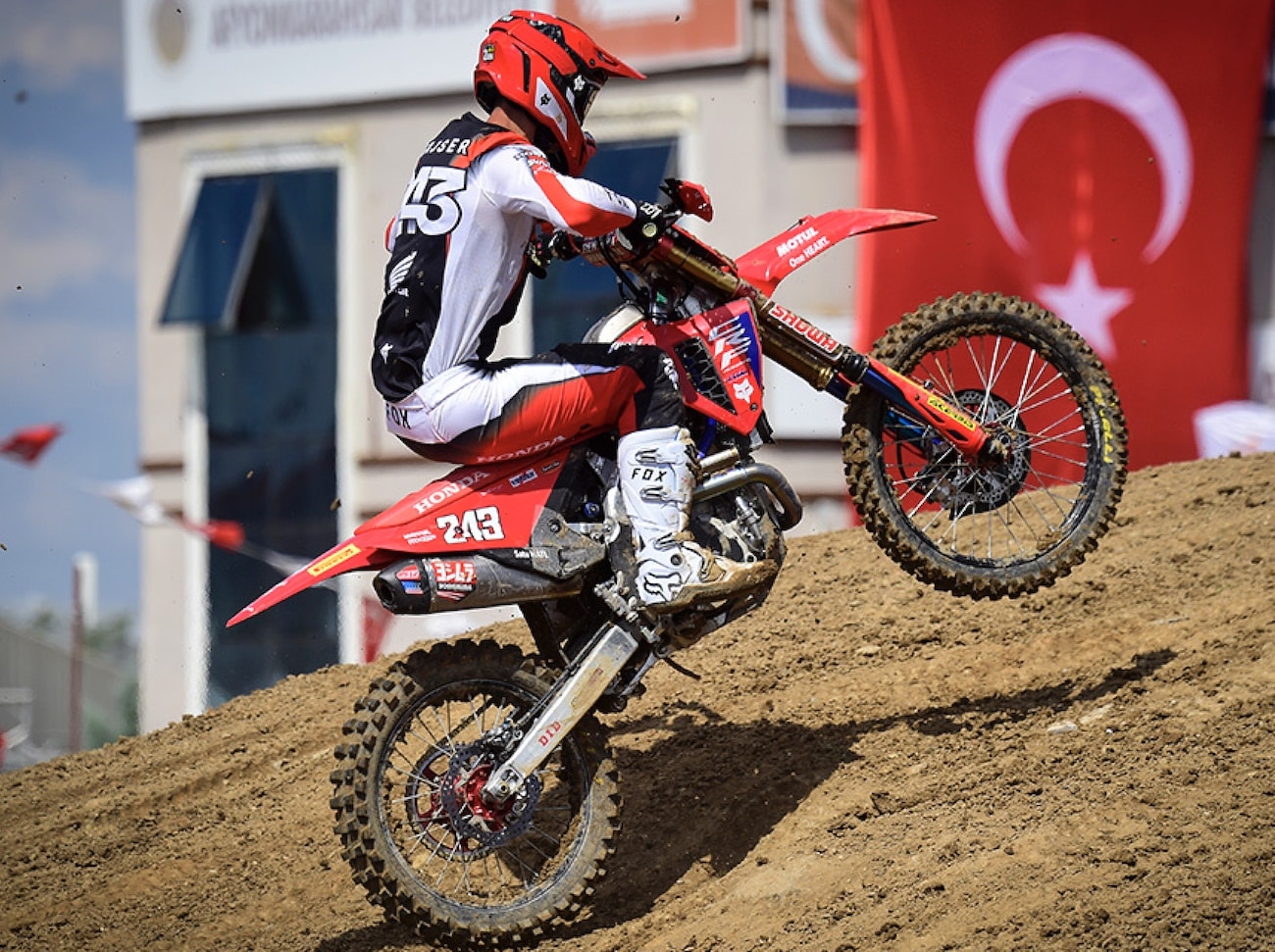TEN THINGS ABOUT THE AMA’S HOMOLOGATION RULE
(1) Homologation. Motorcycles require homologation approval from the AMA before being raced in Supercross or AMA Nationals. Every year the OEMs pay the AMA $5000 to homologate each new model, making it eligible to race for the next five seasons. Unfortunately, that means Ken Roczen can’t line up on a 2008 Suzuki RM250 two-stroke, and Jett Lawrence can’t line up on a 2007 Honda CR250.
(2) Limitation. The homologation rule is a large part of the 1986 “production rule,” because it requires OEMs to compete with production-based bikes. HRC Honda can’t build and race an entirely new CRF450 for the Lawrence brothers without first homologating it. This is meant to regulate the cost of racing by making sure privateers have access to the same bikes as the factory riders.
(3) Availability. Part of the rule is that homologated models must be available to the public for privateers to buy and race; however, the timeline is convoluted. The OEMs are required to have at least 400 units of each model for sale, but they only need to prove they have 200 units by March 1st. The remaining 200 units must be available by June 1st. This doesn’t help privateers racing Supercross at the beginning of the year.
(4) History. The rule was first implemented for the 1986 season. Up until that point, the “works bikes” of the factory teams were prototype models that couldn’t be purchased by average Joes. It was a true arms race where manufacturers were sparing no expense to develop bikes for their factory riders.
(5) Chassis rules. The main frame must be the same as that of an originally homologated model. Cracked or broken frames are prohibited. Strengthening gussets or tubes may be added (as seen on the Lawrence brothers’ CRF450s in 2023–2024), but none may be removed. Accessory brackets (for the radiator, shock reservoir, etc.) may be changed, relocated or removed. The engine-mount location, steering-head location and angle, swingarm pivot point and rear suspension linkage point must be the same as on the homologated model. The use of offset bearing races for altering the steering angle is permitted. Subframes may be replaced with aftermarket units of steel, aluminum, titanium or the same material as the OEM part. The replacement part must be similar in design to the production part and utilize the original mounting points.
(6) Suspension. Most dedicated fans know about the production rule, but did you know that homologation is required for suspension in the 250 class? The 450 riders are allowed to run “unobtainable” works suspension, while the 250 riders are limited to stock suspension or homologated A-kit suspension that doesn’t exceed $6300 for the forks and $2500 for the shock.
 Tim Gajser’s MXGP CRF450 doesn’t have to have the same frame, engine, transmission or overall design as the production-based CRF450 that Jett Lawrence was required to race in 2024.
Tim Gajser’s MXGP CRF450 doesn’t have to have the same frame, engine, transmission or overall design as the production-based CRF450 that Jett Lawrence was required to race in 2024.
(7) MXGP. The FIM Motocross World Championship is a “works bike” series. There, you can “run what you brung.” Beta raced its 450RX in MXGP for three full seasons before releasing it to the public and racing in the U.S. You’ve never seen TM motorcycles in the U.S., but they’ve raced in the MXGPs. And, of course, it’s why Antonio Cairoli could race his Ducati Desmo450 at the MXGP of Arnhem this year, even though it’s still in its prototype phase.
(8) Specifications. The AMA rule book states that engines must be single cylinder and must use internal combustion (no electric bikes). Technically, the 450 class is supposed to be made up of bikes with 251cc–450cc four-stroke engines or 150cc–250cc two-stroke engines, but the AMA doesn’t hold to it. If you want to race a 250cc four-stroke in the Premier class, you can. There’s also a minimum weight (220 pounds for 450Fs and 212 pounds for 250Fs) to ensure mechanics aren’t cutting off an unsafe amount of weight.
(9) Two-strokes. The Austrian brands (KTM/Husky/GasGas) have homologated their 125 and 250 two-strokes every year, while Yamaha neglected their two-strokes up until recently. In 2022, Carson Brown wanted to race the YZ250 two-stroke in the 450 class at Washougal, so Yamaha homologated both their YZ125 and YZ250 two-strokes for AMA racing again. Carson has raced it at Washougal for the last three seasons.
(10) 2025 CRF450. Honda paid to homologate the all-new 2025 CRF450 for Hunter Lawrence to race at the last two outdoor rounds and for both Lawrence brothers to race at the final three SMX Playoff races. The extra publicity Honda received when Hunter showed up on the new bike and won the first moto at Unadilla was certainly worth the price of admission. Since it was late in the season, Honda already had new bikes in dealerships for sale.






Comments are closed.